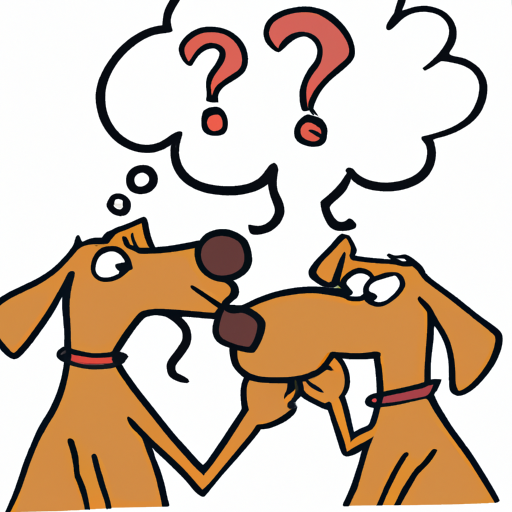Introduction
You may have observed that dogs often nibble each other during their playful engagements. This behavior might seem strange to you, but rest assured, it’s a normal part of their social interaction. Understanding the underlying reasons can help you better comprehend your furry friend’s behavior.
Understanding Canine Behavior
Dogs don’t only communicate through barking or wagging their tails; they also use physical interactions like nibbling. Here are some common reasons why dogs nibble each other:
-
Social Bonding: Dogs often nibble each other as a form of social bonding. It’s their way of showing affection and creating a deeper connection.
-
Grooming: Similar to cats, dogs sometimes nibble each other to help with grooming. They reach spots that are hard to clean, like behind the ears or under the chin.
-
Playful Interaction: Dogs use nibbling as a form of play. It’s similar to children wrestling or playing tag.
-
Dominance Display: Sometimes, nibbling can be a display of dominance. The dog doing the nibbling is trying to assert their authority over the other.
-
Teething Relief: For puppies, nibbling can provide relief from the discomfort of teething.
The Significance of Nibbling in Canine Communication
Nibbling is more than just a random act. It’s a part of the complex language dogs use to communicate. Below is a table that explains what different types of nibbles might mean:
| Type of Nibble | Possible Meaning |
|---|---|
| Gentle nibbling | Shows affection or a grooming attempt |
| Aggressive nibbling | Display of dominance or frustration |
| Nibbling followed by licking | Playful interaction |
| Nibbling with whining | Signal for attention or discomfort |
When Should You Intervene?
While nibbling is usually harmless, there are times when you might need to step in. If the nibbling becomes aggressive or one dog seems uncomfortable, it’s time to intervene. Ensure the play is always supervised and teach your dog the “leave it” command to stop unwanted behaviors.
Encouraging Healthy Play
As a caregiver, you can encourage healthy play by providing plenty of toys for your dogs. Regular exercise and mental stimulation can also prevent them from resorting to aggressive nibbling. Remember, understanding and respecting their communication methods is key to a harmonious relationship.
Frequently Asked Questions
Q: Is nibbling a sign of aggression?
A: Not always. While aggressive nibbling can indicate dominance, gentle nibbling is usually a sign of affection or grooming.
Q: What should I do if my dog nibbles me?
A: If it’s gentle and non-threatening, it’s likely a sign of affection. If it’s painful or aggressive, you should discourage the behavior and consider consulting a professional dog trainer.
Q: Can nibbling be harmful to dogs?
A: Typically, it’s harmless. However, if it becomes aggressive or causes distress, it may lead to behavioral issues or injuries. Always supervise your dogs when they’re playing and intervene if necessary.



